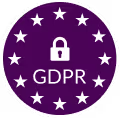Diversity Hiring
These days, it’s not enough for companies to pay lip service to diversity–people want to see businesses put their money where their mouth is, and truly hire diversely. More and more workers are seeking employers that have embraced diversity and inclusion, and that’s why HR needs to invest more thought into the process than ever before. Hiring must be done based on merit, of course, but with taking extra care to remove potential biases and prejudices.
What Is Diversity Hiring?
Diversity hiring is the practice of recruiting new employees to increase the proportion of certain demographics within a company. The critical term here is “demographics,” because people can be described in many ways. When it comes to diversity, equity, inclusion and belonging (DEIB), the focus is on groups that have been at a historical disadvantage in the workplace. A diversity hiring strategy attempts to examine if the company lacks people from such groups and change recruiting concepts accordingly.
The Goal of Diversity Hiring
Like many types of organizational development, diversity hiring aims at improving the overall abilities of a company. At first, there was a lot of skepticism towards the idea because proper implementation methods were not generally understood, and it was felt that a deliberately diverse workforce might harm productivity. But once DEIB initiatives became more common, they acted as a sort of testing lab that revealed how companies are actually affected by them. The results showed that diversity is good for the bottom line, and more.
McKinsey issues regular reports about the benefits of DEIB programs with a focus on tangible business results. They have found not only that diversity hiring and promotion pays off, but that returns have been increasing as the idea becomes more accepted in the business world.
According to McKinsey, organizations that have a relatively high concentration of women on the executive team see financial performance that is 39% higher compared to companies with a low level of women. Similarly, when the workplace diversity factor is ethnic, better performance is also 39% higher. And these numbers have only gone up over the years. In 2018, for instance, equivalent figures were 21% and 33% for women and ethnicity respectively.
The Diversity Hiring Process
The task of a diverse recruiting procedure is to eliminate bias wherever possible because even the most open-minded people can suffer from unconscious prejudices. Keep in mind that diversity hiring has multiple dimensions:
- Changing your current workforce to reflect diversity goals
- Ensuring that hiring policies are continuously refined to eliminate bias
- Checking the demographics of all employees on a periodic basis to track turnover and find replacements where necessary
- As time goes on, updating diversity goals to get to a higher DEI level
We’ve outlined below the general guidelines for implementing a non-discriminatory recruiting effort.
Begin with a Diversity Hiring Audit
A diversity audit will tell you where your company lacks equal representation today, and why that happens. There are two steps involved:
- Demographic surveys. It can be a challenge to figure out all the types of diversity and how they are represented at your company. One good place to start is at the US Equal Employment Opportunity Commission website, which lists common sorts of discrimination. Once you have an idea of the types of diversity you are aiming for, conduct a company-wide survey so that employees can report where they fit. Don’t forget to allow workers to add categories in case there are some specific identities that you overlooked.
- Current process overview. Now, ask yourself the question, “How did we get here?” If you have kept rejected applications, check to see if a certain demographic was turned down too often. Or, perhaps you are using a recruiting agency that sends a lot of candidates from an over-represented population.
Choose an Initial Category
Demographic surveys might show a glaring weakness in your DEI status; perhaps a complete diversity population is missing from the workplace. In this case, selecting a starting category is a simple choice because it’s always easiest to do an initial test case based on the weakest area. Here, improvement on any level will be better than where you are today.
However, if your company already has some level of diversity across targeted groups, then start with gender. Many companies aim for 50% of employees to be women because, after all, that is their representation in the general population.
Adapt Job Descriptions
A job posting outlines the essential qualities that you want an employee to have, but it also provides subtle hints about your company. Even for a general posting, take care to eliminate phrasings that are not inclusive. For example, you should remove any gender-specific language. Here is an online tool for help with this. Also, make sure to highlight your commitment to diversity.
When looking for diverse applicants, it’s essential to appeal to the targeted populations. If you are hiring for something specific, use language such as “we welcome applications from the XXX community.” You might also mention an interest in people from certain ethnic backgrounds, who speak a number of languages, or who have “multinational experience.”
Rethink the Recruiting Media Mix
If you are relying on headhunters, you should take a close look at their approach. To reach diversity targets, you might want to include some specialist recruiting firms according to the population that they serve. For example, there is Advento (women), AfroTech (black people), and Disability:IN (disabled people). Similarly, take care to try new recruiting channels such as social media sites, specialized job boards, and campus career days.
Make DEI Ambitions Public
Almost every candidate who is researching your company will visit your website. You will want to give them the immediate impression that your organization is dedicated to diversity, and an easy way to do this is by using the right images. To this end, make sure that diverse populations are featured in the pictures on your website and check that all of your marcom materials show DEI employees or models.
Diversify Employee Referrals
Some organizations also invite employees to provide candidate referrals. This can be a low-cost alternative for accessing quality candidates. But, when your company lacks diversity, this might lead to the “birds of a feather” problem, where non-diverse employees submit referrals for people in the same population.
To resolve this issue, you need to make sure that all employees know about your diversity hiring goals, while giving priority to applications from diverse populations.
Use Blind Application Reviews
There are many indicators on a resume and application that can reflect the characteristics of a candidate. These include name, schools attended, languages spoken, marital status, and personal activities. To make sure that unconscious bias doesn’t sneak into your thought process, use blind hiring, where these indicators are removed. There is even software that can help to perform this process.
Taking this a step further, you can use AI technologies to make a first pass through applications. Maybe you are looking for certain DEI categories, or want to exclude other demographic characteristics. Specialized AI-based resume screening technology allows you to set search keywords and will then sift through hundreds of applications in a fraction of the time needed by the HR team.
Just take care not to let AI affect the entire hiring process. Mistakes in your search settings can cause the technology to provide results that are suboptimal. Amazon’s famous experience in this predicament is just one well-known example. It’s important to use human reviewers at some stages to ensure that technology is doing the right job.
In addition, you should consider giving applicants the option to take a test that assesses important skills and attitudes for the job in question. This allows your team to recognize a talented applicant in cases where their work experience or education don’t reflect their abilities.
Examine the Interview Process
One area where you can’t easily eliminate bias is during interviews. They are usually one-on-one setups for the sake of efficiency. However, if diversity is essential, then it’s time to change here as well. Try the following options:
- Use at least two interviewers from diverse populations
- Give interviewers a standard set of questions that has been reviewed for fairness
- Focus more on skills than on education and personal background
- Discuss the hurdles that the applicant has faced and how they overcame them
- Create a review panel that checks the interview process and its outcomes for bias
- Look for trends in the hiring recommendations that the HR team makes
Moving Forward through Benchmarking
The previous steps have set you up for a successful DEI initiative. Now, in order to make your organization actually diverse, you need to think about refinement.
Once you’ve started on a diversity hiring initiative, it’s time to go beyond your original goals. Remember, it’s best to start with a simple target such as gender diversity, and then look at other categories. But how do you know from which diversity categories you should hire, and how many employees from each type to bring on board? There are various approaches to this issue. Here are some of the helpful methods used by DEI-supportive organizations.
Executive Choice
As an HR professional, it’s your task to perform diversity audits and be able to report to senior employees about what should change. Chances are that you might move in any one of several directions. But those at the executive level are ultimately responsible for the DEI status of your organization and so the choice is up to them. HR might have ideas about how to improve diversity, but accepting those ideas and changing your organizational culture are decisions that are made by higher ups, because their resources are on the line. However, if the executive team is already diverse itself (see below), it should have a good idea of how to proceed. After all, superior decision-making is an important aspect of diverse groups.
Evidence
Perhaps the executive team will make the decisions, or it will leave that up to you. Regardless, analyzing the progress of DEI hiring methods is critical. Your bosses will want to know how the strategy is going, no matter who is making the decisions.
There are several ways to collect and analyze the effect of DEI hiring. One is the use of workforce analytics (WA). At its diagnostic level, WA tracks cause and effect. So, if productivity in your organization goes up, WA will be able to determine what factors led to that increase. If gender diversity on the executive team is one of those factors, WA will confirm it. Similarly, WA in a predictive mode will be able to tell you the outcome of specific diversity hiring actions based on historical results in your and other organizations.
Another form of evidence is diversity surveys and related feedback. For example, the concept of DEIB states that employees need to feel as though they belong (hence the “B”). To assess this component, you’ll need to rely on interviews.
However, you can go far beyond simple questions. When a company is successful at DEI hiring, employees will notice. Distributing detailed surveys about employee opinions regarding diversity will get you essential data from one of your most important sources.
Below are some possible survey questions related to hiring practices. Answers for this type of question are offered in graded form, i.e. 1-5 (as opposed to “yes” or “no”):
- Your organization’s recruiting process is free of bias.
- Candidates from diverse groups are given an equitable chance of getting hired.
- During the recruiting process, you have noticed that a fair number of underrepresented applicants are invited for interviews.
- Hiring processes deliver results that are measurable, transparent, and equitable.
- Your organization has a reputation for exemplary DEI efforts and this supports its ability to attract diverse employees.
Diversity Benchmarking Organizations
As is obvious, diversity hiring and DEI success involve a complex set of steps. For this reason, there are companies that specialize in rating your diversity efforts. Through close work, various surveys, brainstorming sessions, and their proprietary benchmarking systems, these organizations will grade your DEI status and give you ideas about how to improve.
Remember that the quality of a DEI program is not always about quotas. Except in large companies, it is very difficult to adjust your employee demographics according to general population statistics (if that is the metric you want to use). It’s more important to put forward a serious effort.
For example, the Global Diversity, Equity & Inclusion Benchmarks (GDEIB) system uses an extensive series of questionnaires to determine your DEI level. The lowest level is “inactive”, meaning that your organization essentially does nothing to improve diversity, while the highest level is “best practice”, in that whatever you are doing is exemplary. A brief look at the GDEIB system shows that it focuses on three areas of performance:
- The internal ability to attract and retain employees
- The external ability to listen to and serve society
- Your company’s foundational efforts to pursue DEI goals
After assessing these areas, GDEIB provides a “bridging” function to improve your abilities.
What stands out in the GDEIB questionnaire is that it is more about how you are working towards your goals, rather than achieving a certain outcome. This makes sense, particularly for multinational companies. If you have, for example, a certain ethnic representation in a country where that ethnicity is a majority, it does not make sense to hire a large number of people from the minority. Instead, you might look at other kinds of diversity, such as education, religion, or social status. A lot depends on how you and your employees see the way in which your organization compares to the world around you.
Keeping Up to Date with Diversity
Now, let’s say that you’ve achieved diversity as a whole in the organization, with healthy levels of representation across categories. But what about the hierarchy? Recalling the McKinsey study, these benefits occurred because of executive diversity. Diverse employees should be present at all levels of a business and in as many operational areas as possible. In this way, the advantages that are created by a DEI workforce, such as diverse and new points of view, satisfying the needs of younger generations, and replacing retiring workers, can be realized.
Like many business concepts, DEI is an evolving subject. Take, for example, the transgender population. Society lacked awareness of their challenges until just a few years ago. Now, trans people are an important part of the conversation. Their needs have inspired businesses to rethink whole categories of practices that were once unquestionable, such as maternity leave and gendered bathrooms. Moreover, demographics change. Has your community been impacted by immigration or political unrest? Your hiring and psychological workplace safety policies might need to be redesigned as a result.
Diversity Hiring Best Practices
It’s HR’s job to start the process of building a diverse and inclusive environment. But the work does not end there. No less than a total revision of company culture may be in order, particularly for organizations where employee groups resist such change. After all, what’s the point of hiring for diversity if your new employees quit as soon as they face racism and prejudice?
A culture change actually makes HR’s work easier. When the entire company is on board with diversity hiring, you will find that:
- The financial success that results from diversity hiring convinces executives to build DEI concepts into new aspects of business, and HR will get credit for finding employees who fit the strategy.
- Managers will want you to hire diverse candidates for them, and be more accepting of such new employees.
- As the nature of your workforce changes, employees will be more content and productive in their jobs. To reflect this fact, Great Place to Work found that diversity and inclusion in the workplace leads to a retention rate that is 5.4 times higher than in companies with low DEI success rates.
Creating cultural change is often a long-term and difficult task. Here are some core ideas for making it a reality:
Make DEI a Part of Your Mission Statement
People at all levels of an organization need clear and frequent reminders about essential organizational goals. A starting point is in your mission statement. If you already have one, then insert the diversity support section at or near the top. You should also consider putting environmental, social, and governance (ESG) data on your website to let employees know how the company is doing, and to give everyone a bit of a push if your numbers aren’t great. This will also let job-seekers know that you are serious about DEI, which will attract like-minded people.
Adjust Diversity Hiring Goals According to Local Culture
Not every culture is totally accepting of every diversity concept. According to Statista, the value placed on working with people of different identities and cultures differs across countries. So implementing DEI awareness at the top of a socially conscious company might be easier than spreading it across multinational subsidiaries.
The right approach here is to try and test. In cooperation with your local partners, talk about what diversity principles will be accepted and experiment with different approaches. Make sure to arrange for Employee Resources Groups (ERGs) that allow diverse communities to communicate about and lead change from their side of the organization. ERGs are also helpful for monitoring the DEI health of certain groups (see below).
Get Certified
Earning credentials as someone who understands and supports DEIB in the workplace provides many advantages, such as:
- A high level of knowledge regarding diversity ideals and practical steps
- Proof that you and/or your organization are part of the DEI revolution
- Membership in diversity-focused associations and movements
It is possible to obtain certification both on an individual and organizational basis. Many universities and coaching organizations, such as the Association for Talent Development and the International Coaching Federation, will provide certification to specific candidates. On a company-wide level, you can look at Great Place to Work and Diversio.
Recognize Diversity Successes
Establishing a truly inclusive work environment is not easy. Even the most socially conscious person must overcome ingrained biases to avoid prejudiced thoughts. That’s why meeting diversity goals is something that should be widely recognized. It shows more than just demonstrating your identification with company ideals; it also means that you have won in your internal struggle against racism and sexism. HR needs to commend such people by:
- Mentioning them in company communication such as newsletters or “employee of the month” initiatives
- Including a comment in their performance evaluations
- Providing them with tangible rewards such as extra vacation days and bonuses
Recognition can start at square 1, which is the HR team. When it meets diversity hiring goals, that achievement should be publicly mentioned. Similarly, when a diversity hire shows great performance or gets an exceptional promotion, don’t let employees forget how that came to be. Employees in general should also get commended for being allies, taking initiative in ERGs, supporting new diversity hires, and contributing to employee wellness.
Monitor Feedback
HR’s efforts are just the beginning of DEI transformation. As long as a diversity hire is with your organization, they stand the risk of encountering employees from privileged groups who will not accept them, or worse, try to sabotage them. HR should develop communication channels for diversity hires to speak about their experiences, with an option for confidentiality. Similarly, whistleblowers should have the freedom to “see something, say something”. Aside from these exceptional measures, employees should have the option to provide comments about the promotion and success of diversity in pulse surveys and annual feedback reports. Finally, and only if there is consent, HR should occasionally look at ERG postings to see if there are any complaints.
Reinforce the Message with DEIB Training
A proper hiring process is only the first step in reaping the benefits of DEIB. Obviously, the other aspects of the concept – equity, inclusion, and belonging – also need reinforcement.
Companies that want to see diversity spread across and up organizational culture must ensure that employees at all levels receive extensive L&D programs aimed at maximizing understanding and application of relevant attitudes and actions.
These are not typical subjects because they can be emotionally charged. In many cases, resistance to DEI is ingrained due to factors like institutional racism. Because of these challenges, many companies prefer the up-close-and-personal treatment of a diversity coach.
It’s not only the results that count but the process as well. Finding diverse experts for a DEIB training program makes it more authentic. This means that the HR team needs access to a large pool of diversity professionals.
Growthspace for Diverse DEI Training Initiatives
Learning and development are crucial for teaching employees about DEI concepts and implementation, but they are often required on a large scale. Growthspace allows HR to apply DEI programs across any organization, regardless of size. With Growthspace, companies automate the process of matching employees to a wide – and diverse – range of experts for authentic DEI initiatives.














